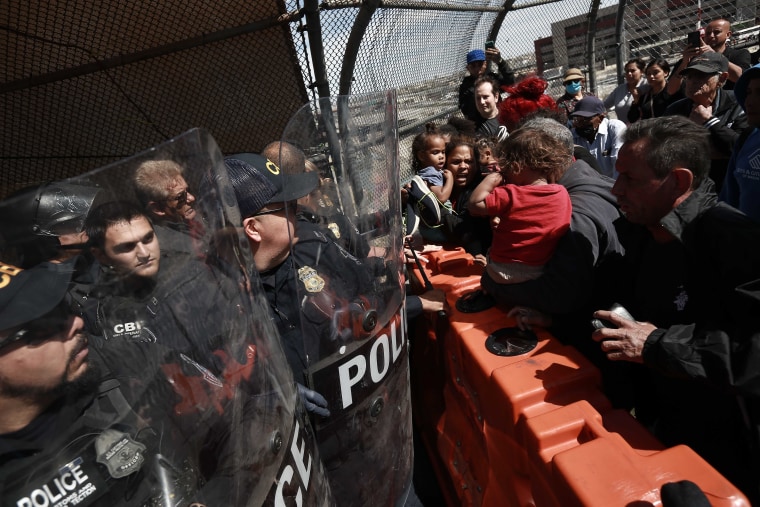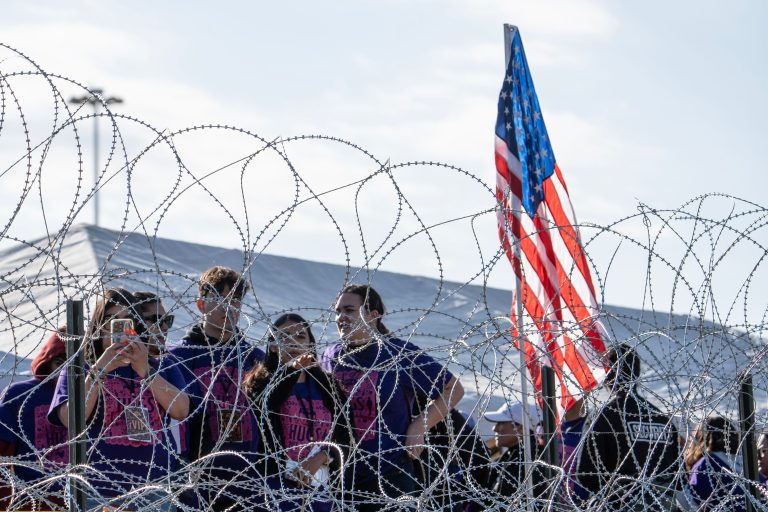

Understanding Trump’s Immigration Policies: A Legacy of Border Security
Donald Trump’s presidency left an indelible mark on US immigration policy, characterized by a pronounced focus on border security. While the rhetoric was often inflammatory, the policies themselves were multifaceted and involved a complex interplay of executive actions, legislative proposals, and judicial challenges. Understanding this legacy requires moving beyond the headlines and delving into the specifics of his approach.
The “Wall”: A Symbol and a Strategy
Perhaps the most iconic symbol of Trump’s immigration stance was the proposed border wall with Mexico. More than just a physical barrier, the wall represented a broader ideological shift towards a more restrictive immigration system. While the complete wall was never built, significant sections were constructed or renovated, representing a substantial investment in physical border security. The wall’s impact, however, extends beyond its physical presence. It became a potent symbol, fueling debates about national security, economic impact, and human rights. Its construction also raised questions about environmental impact and land ownership rights.
Beyond the Wall: A Multi-pronged Approach
Trump’s immigration policies weren’t solely focused on the wall. They encompassed a range of measures designed to tighten border control and reduce illegal immigration. These included:
-
Increased Border Patrol Agents and Technology: Significant resources were allocated to increase the number of Border Patrol agents and enhance technological surveillance, including drones and improved sensors. This aimed to bolster the physical presence at the border and improve detection capabilities.
-
“Remain in Mexico” Policy (MPP): This policy forced asylum seekers to await their US immigration hearings in Mexico, often in dangerous and unsanitary conditions. The policy was widely criticized by human rights organizations and ultimately deemed illegal by a court ruling.
-
Travel Ban: Several executive orders restricted entry from several Muslim-majority countries, sparking significant legal challenges and raising questions about religious discrimination. The Supreme Court eventually upheld a revised version of the ban.
-
Zero Tolerance Policy: This policy, implemented in 2018, led to the separation of thousands of children from their parents at the border, causing widespread outrage and condemnation. The policy was quickly reversed, but the lasting trauma remains a significant aspect of Trump’s immigration legacy.
-
Increased Deportations: The Trump administration prioritized the deportation of undocumented immigrants, leading to a significant rise in deportations compared to previous administrations. This included targeting individuals with criminal records, but also those without, generating concerns about due process and the impact on families.
The Economic and Social Impact
The economic and social consequences of Trump’s immigration policies are still being assessed. While proponents argued that stricter enforcement would reduce crime and protect American jobs, critics pointed to the negative impacts on the economy, particularly in sectors reliant on immigrant labor, and the humanitarian costs associated with family separations and the treatment of asylum seekers.
A Legacy of Debate
Trump’s immigration policies remain a subject of intense debate. Supporters emphasize the need for stronger border security and the importance of upholding the rule of law. Critics, however, highlight the human rights violations, the economic consequences, and the detrimental impact on vulnerable populations. The long-term effects of these policies on US immigration and society as a whole are yet to be fully understood.
Summary Table: Key Aspects of Trump’s Immigration Policies
| Policy | Goal | Outcome | Criticism |
|---|---|---|---|
| Border Wall | Increased physical border security | Partial completion, significant cost | Ineffective, environmentally damaging, inhumane |
| Increased Border Patrol | Enhanced border surveillance | Increased agent numbers, improved technology | High cost, potential for human rights abuses |
| Remain in Mexico | Reduce asylum claims in the US | High number of asylum seekers in Mexico | Human rights violations, unsafe conditions |
| Travel Ban | Restrict entry from certain countries | Partial implementation, legal challenges | Religious discrimination, xenophobia |
| Zero Tolerance Policy | Deter illegal border crossings | Family separations, widespread condemnation | Cruel and unusual punishment, irreparable harm |
| Increased Deportations | Remove undocumented immigrants | Increased deportation numbers | Separation of families, due process concerns |
The legacy of Trump’s immigration policies is complex and multifaceted, leaving a lasting impact on the US immigration system and sparking ongoing debates about border security, human rights, and the role of immigration in American society. Further research and analysis are necessary to fully understand the long-term consequences of these policies.

Additional Information
Understanding Trump’s Immigration Policies: A Deeper Dive into the Legacy of Border Security
While the headline “A Legacy of Border Security” simplifies the complex reality of Trump’s immigration policies, it accurately reflects a central, if not singular, focus. Analyzing these policies necessitates moving beyond simple descriptors and examining their multifaceted impact on border security, legal immigration, and the broader socio-economic landscape. The perceived success or failure of these policies is inherently subjective and depends heavily on the lens through which they are viewed.
1. The “Wall” and its Limitations: The most prominent symbol of Trump’s immigration platform was the border wall with Mexico. While sections were built, its overall impact on border security is debatable. Physical barriers can deter some crossings, particularly in easily accessible areas. However, studies by organizations like the Migration Policy Institute (MPI) have highlighted the limitations. Smugglers adapt, utilizing alternative routes, including more dangerous terrain or sophisticated tunneling techniques. The wall’s effectiveness is also geographically limited, ignoring significant portions of the border that are already naturally difficult to traverse (e.g., mountainous regions, rivers). Further, the cost-benefit analysis remains contentious, with substantial financial investment yielding questionable returns in terms of overall border security enhancement. The wall’s symbolic importance arguably outweighed its practical effectiveness.
2. Increased Enforcement and its Consequences: Trump’s administration significantly increased interior immigration enforcement, leading to a rise in deportations. While this might appear as a success in terms of border security by removing individuals deemed to be in violation of immigration laws, it had unintended consequences. The focus on deportation created a climate of fear within immigrant communities, hindering cooperation with law enforcement and potentially driving crime underground. The separation of families at the border, a highly publicized consequence of this policy, generated significant international condemnation and raised ethical concerns about human rights. Furthermore, the prioritization of enforcement over comprehensive immigration reform strained resources and potentially diverted attention from other security concerns.
3. The “Remain in Mexico” Policy (MPP) and its Humanitarian Implications: The Migrant Protection Protocols (MPP), colloquially known as “Remain in Mexico,” forced asylum seekers to wait in Mexico while their cases were processed in the US. This policy was widely criticized for exposing vulnerable individuals to significant risks, including violence, kidnapping, and lack of access to basic necessities. While proponents argued it deterred irregular migration, its humanitarian implications overshadowed any perceived border security benefits. The policy’s eventual termination reflects a recognition of its ethical failings and questionable efficacy.
4. Impact on Legal Immigration: Trump’s policies also significantly impacted legal immigration through stricter vetting processes, reduced visa issuance, and increased scrutiny for immigrants seeking lawful entry. These measures, while aimed at enhancing national security, arguably slowed economic growth by limiting access to skilled labor and potentially damaging international relations. The long-term consequences on legal immigration remain to be fully assessed, but the immediate effect was a sharp decline in legal immigration numbers.
5. Shifting the Narrative on Asylum: The Trump administration attempted to redefine asylum eligibility, often characterizing asylum seekers as economic migrants rather than individuals fleeing persecution. This stricter interpretation of international asylum law was heavily criticized by human rights organizations and legal experts. The resulting backlog in asylum claims further strained the immigration system and potentially led to prolonged suffering for asylum seekers.
Conclusion: Evaluating the legacy of Trump’s immigration policies solely through the lens of “border security” provides an incomplete picture. A comprehensive analysis requires acknowledging the broader consequences – social, economic, and humanitarian – of these policies. While some aspects may have yielded short-term gains in border control, the long-term impacts, particularly on human rights, international relations, and the overall US immigration system, demand further scrutiny and critical analysis. The effectiveness of any border security strategy must be weighed against its ethical implications and its long-term sustainability. Further research focusing on longitudinal studies and comparative analyses with other nations’ immigration strategies is needed to fully understand the enduring legacy of these policies.




